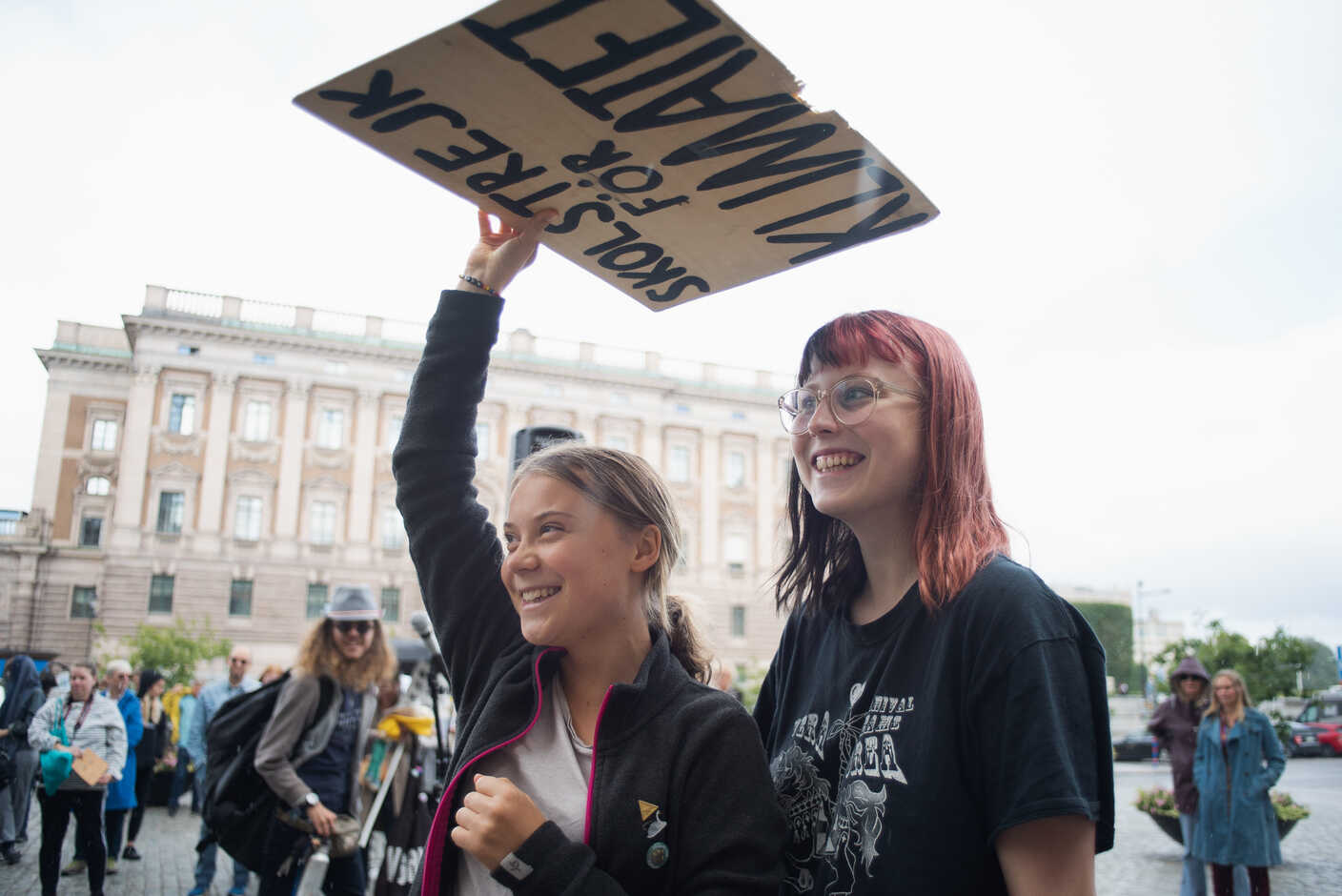“I’ve never met so many people that I connect with so strongly,” says Claudia Kvarnborg, 19, who warmed up for her turn at the mic by rehearsing climate justice songs with her two friends.
It was week 211 of the School Strike for Climate. A little over four years ago, Greta Thunberg, then 15, skipped school to protest outside of Parliament ahead of the 2018 Swedish general election, which evolved thereafter into the Fridays for Future movement. The movement gained international traction, with the goal of putting moral pressure on politicians to enact policies that would meet the Paris Agreement on fighting climate change.
As Sweden prepares to go to the polls again in an election season dominated by discussions around crime and immigration, tireless teenage climate activists who, over the past years, have formed a dedicated core to push for climate action—and in doing so have formed bonds that help them cope with climate anxiety— are using the Fridays leading up to the election to refocus the national conversation. But they question if politicians are getting the message.
“I feel very small and that [the leaders] don’t listen to us. They hear us, but they don’t listen,” says 19-year-old Filippa Paperin, who joined her first strike at age 15. “We don’t see any change.”
In a video posted online last week, Thunberg was bleaker. “If your hope rests on some almost burnt out teenagers doing this after school… well then there’s not much hope. We need to build hope, and we do that with people joining the movement.”
But 19-year-old Thunberg, whose star power led the 2019 youth climate revolution—and whose personal story has been spun into a best-selling book, a Hulu documentary, and even a theatrical play—was nowhere to be seen on the square.
“Where’s Greta?” a woman urgently asked other teen organizers. “Is she going to come here? I’ve been here since 11 o’clock.” The organizers shrugged in her direction. “That’s her choice if she comes,” they said as they continued setting up.
Organizers are used to warding off Thunberg’s fans. “Well a lot of people are very creepily obsessed and come looking for Greta,” said Anton Foley, 19, an organizer who’s been striking for two years. “Aside from it being really creepy with a lot of adults, usually men, going around and looking for a teenage girl like that, it’s also just telling of the celebrity status she gets. All she’s trying to do is be part of a movement and give the questions and issues in focus the spotlight.”
Focusing on climate change, though, continues to heighten everyone’s climate anxiety. Many said that interacting with so much climate news could be “devastating” or “terrifying.”
“Climate talk is all I surround myself with, because I spend all my free time and, to be frank, some school time as well with organizing,” says Agnes Hjorstberg. “I don’t see any other way of living, because this is what’s going on now.”
However, organizers said that, in equal turn, their friendships and solidarity in the movement made their climate anxiety bearable.
“I feel a lot more hope. I feel a lot more like I can handle [the anxiety],” said Falk, 21, who said striking could sometimes feel more impactful than individual choices, like trying to avoid buying plastics. “Every time we strike, every time we get any sort of positive reaction and get more people to show up, and we see solidarity between the climate movements and other movements—that’s everything that gives me hope,” added Foley.
“I’m so grateful for all the people I’ve met,” said Hjorstberg. ”I think that’s a very good support system in dealing with climate anxiety and the rage towards politicians.”
Thunberg did arrive, shortly before the pep rally got underway, laughing with fellow organizers as they crowded under her “School Strike for Climate” sign to escape the drizzle. She didn’t take the podium, though. Instead, a handful of other teens took turns highlighting different aspects of what they called “a global and existential crisis,” before hopping off stage into an embrace of hugs.
“We’re friends with, like, everyone. It’s just fun that we’re getting a lot bigger, so the movement is getting stronger—and yeah, a stronger bond,” says Kvarnborg, as she finished her turn at the mic. “I think we’re having a bigger impact than we maybe believe that we have.”



